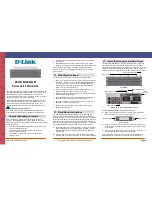
Configuring Device Security
Defining Authentication
Cisco Small Business SFE/SGE Managed Switches Administration Guide
56
4
-
Both
—
Both 802.1X and login authentication are used to initiate accounting.
-
None
—
No authentication is used to initiate accounting.
•
Supported IP Format — Indicates whether Ipv4 or Ipv6 are supported.
•
Default Retries — Provides the default retries.
•
Default Timeout for Reply — Provides the device default Timeout for Reply.
•
Default Dead Time — Provides the device default Dead Time.
•
Default Key String — Provides the device default Default Key String.
•
Source IPv4 Address — Defines the source IP address that is used for
communication with RADIUS servers.
•
Source IPv6 Address — Defines the source IP address that is used for
communication with RADIUS servers.
The following parameters are configured for each RADIUS server:
•
IP Address — Displays the Authentication Server IP addresses.
•
Priority — Indicates the server priority. The possible values are 0-65535,
where 1 is the highest value. The RADIUS Server priority is used to configure
the server query order.
•
Source IP Address — Displays the Authentication port’s IP address.
•
Authentication Port — Identifies the authentication port. The authentication
port is used to verify the RADIUS server authentication. The authenticated port
default is 1812.
•
Accounting Port — Indicates the port used to send login and logout messages
to the RADIUS server.
•
Number of Retries — Defines the number of transmitted requests sent to
RADIUS server before a failure occurs. The possible field values are 1 - 10.
Three is the default value.
•
Timeout for Reply — Defines the amount of the time in seconds the device
waits for an answer from the RADIUS server before retrying the query, or
switching to the next server. The possible field values are 1 - 30. Three is the
default value.
•
Dead Time — Defines the amount of time (minutes) that a RADIUS server is
bypassed for service requests. The range is 0-2000. The Dead Time default is
0 minutes.
















































